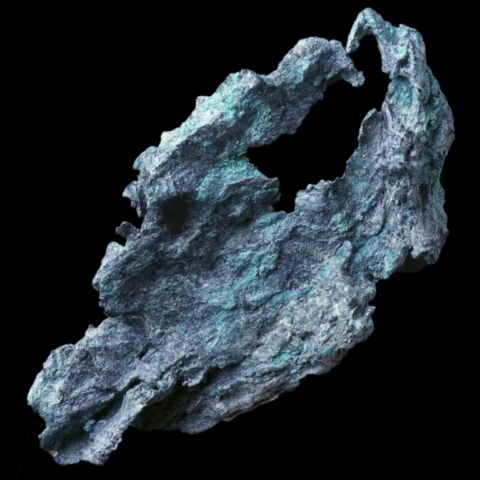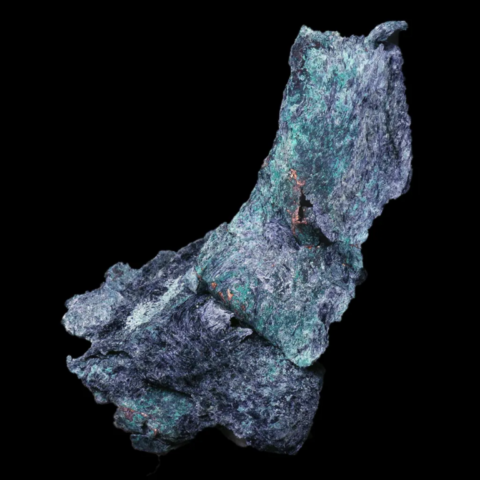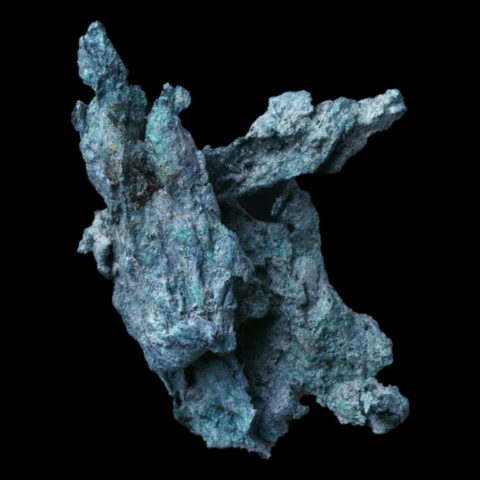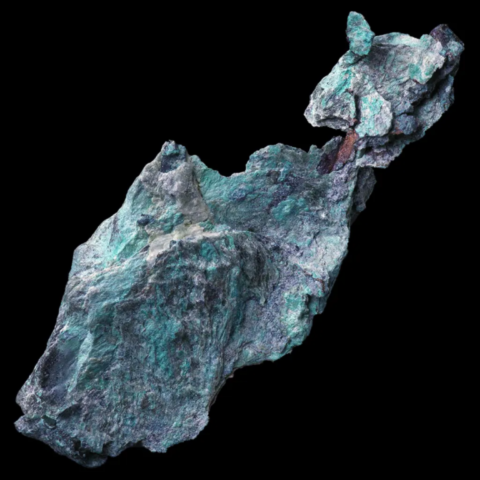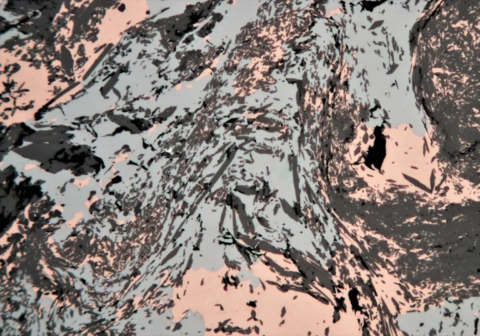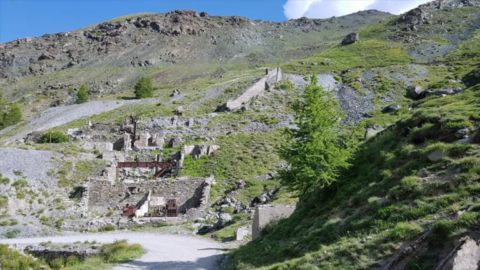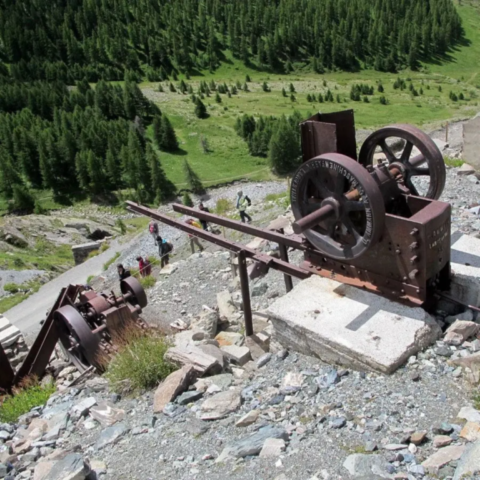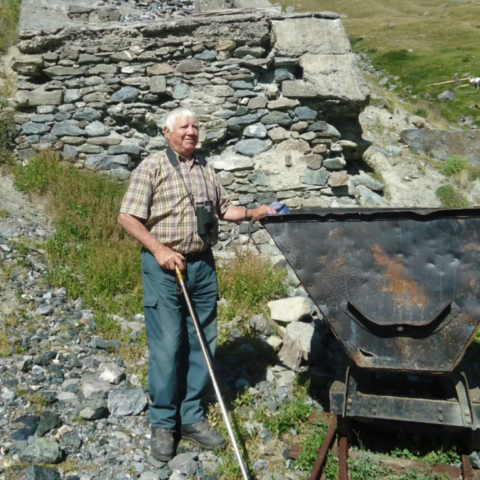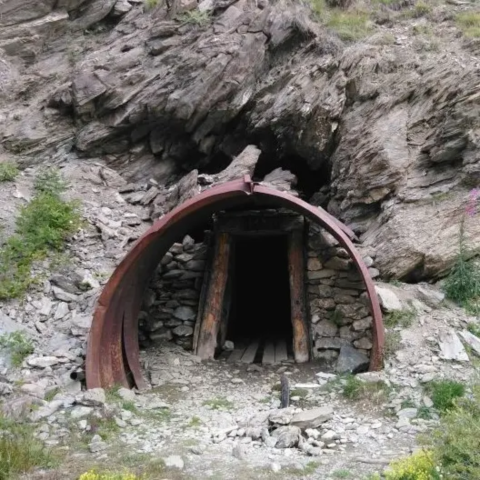Les Clausis Mine, St-Véran, Hautes-Alpes, France
The Clausis mine, nestled in the majestic Queyras mountains (France), is much more than just a mining relic. It tells a geological and human story that spans millions of years, from the formation of the oceanic crust to human efforts to exploit its natural resources. This unique site, at the crossroads of Earth sciences and industrial history, offers an exceptional opportunity to understand the complex geological processes that shaped the Alps and the challenges faced by miners throughout the centuries.
The geological formations around the mine are mainly composed of serpentinites, chlorite schists, calcschists and cipolins. These rocks, now intensely deformed and metamorphosed, have undergone a past marked by active oceanic hydrothermalism. This process, similar to what is observed today at mid-ocean ridges, involves an interaction between seawater and the ultrabasic rocks of the Earth's mantle. These hydrothermal circulations allowed the oceanic crust to be enriched with metals such as copper and iron.
Then, during the formation of the Alps, the rocks of the oceanic lithosphere underwent high-pressure metamorphism and complex tectonic deformations. The faults, folds and other tectonic structures generated during this orogeny played a crucial role in the mobilization and concentration of mineralizing fluids. These fluids, rich in copper and other metals, infiltrated the fractures of the rocks to form the stratiform mineralized lenses at the contact between the serpentinites and the calcareous schists that characterize the Clausis deposit.
This geological context makes the Clausis an exceptional study site for understanding the processes of formation of metal deposits in metamorphosed ophiolitic environments. It also illustrates the complex history of the Alps, where oceanic legacies and transformations linked to continental collision are mixed.
Minerals from Clausis Mine
- Bornite (Cu5FeS4) : a black to dark bluish-grey mineral, which after analysis under a metallographic microscope reveals that the samples are in fact strongly foliated and folded mixtures of bornite, sphalerite and glaucophane with some rare inclusions of galena.
- Native copper (Cu) : present in the form of lenses, masses or fine veins with most of the time a verdigris oxidation film.
Today the site is classified, it is completely forbidden to collect rocks or minerals, the samples presented are all from old collections.
History of mining
The exploitation of the Clausis probably dates back to protohistory, as evidenced by traces of copper smelting and rudimentary tools discovered in the region. During Antiquity, the Queyras deposits may have served as local sources for the production of bronze.
The rediscovery of the Clausis mine dates back to 1843, when local geologists, including the mining service agent Albert, undertook the first systematic observations. This period marked the beginning of a more organized exploitation, although initially rudimentary. The first modern concessions were awarded at the beginning of the 20th century, with a progressive intensification between 1901 and 1950.
The site, characterized by its high altitude and difficult access, represents a significant logistical challenge. To overcome these constraints, specific infrastructures were put in place, in particular crosscuts dug at different levels to reach the mineralized lenses. The five main crosscuts, numbered 1 to 5, allow the extraction of the ore by following the bornite veins. The galleries extend over several hundred meters, connecting the extraction areas to the storage areas and the dumps. Vertical shafts, now partly collapsed, were used to transport the ore from the upper levels to the sorting and storage areas.
Open-pit trenches are also exploited in the areas where the ore lenses outcrop. This type of extraction, although more economical, presents considerable challenges due to the harsh climatic conditions. The Alpine winters, with their negative temperatures and heavy snowfall, made the work extremely difficult and required the cessation of activities for several months each year.
Despite these constraints, the mine reached its peak in the 1930's. During this period, teams of dozens of workers, often recruited locally, took turns to extract and process the ore. Annual production could reach several hundred tonnes, with a total of approximately 3,286 tonnes of copper-rich ore extracted during the entire period of modern exploitation.
The industrial organisation around the mine included wash houses where the ore was partially purified, workshops for the maintenance of tools and machines, and temporary housing for workers. These facilities, although rudimentary, demonstrate a significant effort to overcome the logistical challenges imposed by the isolated site.
However, from the 1950's onwards, the mine suffered a gradual decline. International competition, marked by the rise of large-scale mining operations in South America and Africa, reduced the profitability of small Alpine mines. In addition, the progressive exhaustion of accessible lenses and the rise in operating costs at high altitude made the activity economically unsustainable. In 1961, the Clausis mine closed its doors for good, marking the end of an era for the region.
Today, the remains of this period of intense activity remain in the form of abandoned galleries, dumps and ruined buildings. These structures, although in poor condition, offer a valuable insight into the industrial history of the region and still attract mineralogy enthusiasts and industrial heritage lovers.
Conclusion
Despite these challenges, the Clausis mine remains a unique witness to the geological and human history of the region. Local initiatives to promote this heritage, including guided tours and conservation projects, help maintain interest in this exceptional site.
In conclusion, the Clausis mine offers a fascinating example of the interaction between Earth sciences and human activities. Its geological wealth, mining history and alpine landscapes make it a must-see place for mineralogy and geology enthusiasts. For future generations, it is essential to preserve this heritage and scientific treasure.
References :
ANCEL, B., CARRE, R., KAMMENTHALER, E. (2006) La mine de cuivre des Clausis à Saint-Véran. Cahiers du Château St-Jean n°2
BOUVIER J.D. (1979) - Le gisement cuprifère de St Véran. Thèse Univ. Genève.78 pp.
FERAUD J. (1997) - Nouvelles données géologiques sur le gisement de Saint-Véran. Rapport BRGM R39901 p. 31-39
Hudson Institute of Mineralogy. (2025). Mindat.org : The mineral database and mineralogy reference.
MARI G. & D. (1979) - La mine de cuivre de Saint Véran. Minéraux & Fossiles, novembre 1979, p. 15-21.
ROUTHIER P. (1946) - Un type particulier de gîte cuprifère associé à des roches vertes : le gîte de Saint-Véran. Etude géologique, pétrographique et métallogénique. Bull. Soc. Fr. Minéral. 69, p. 99-150.


